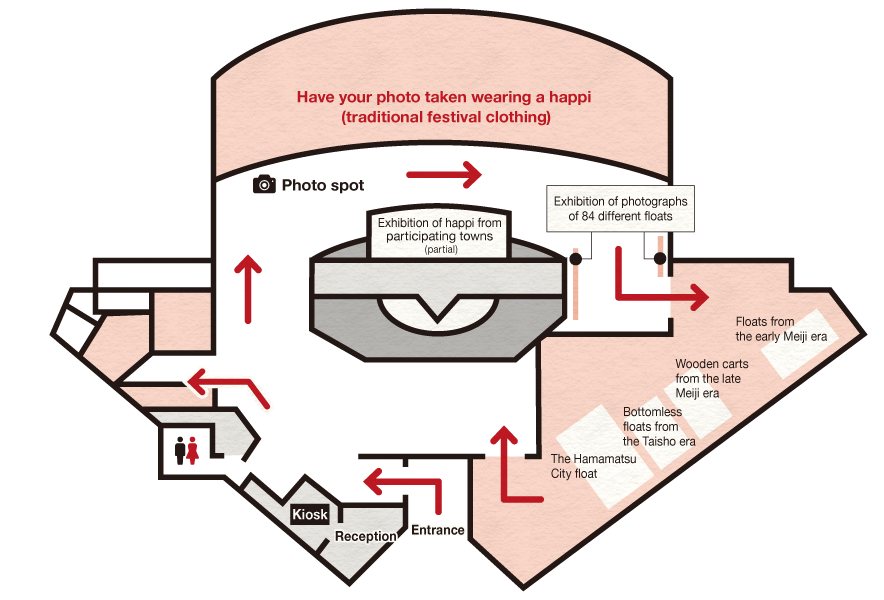Hamamatsu Festival is a kite-flying festival with a history dating back more than 440 years. In May, kites soar majestically into the sky and magnificent palace-like floats illuminate Hamamatsu.
About Hamamatsu Festival

A festival boasting a 400-year-plus history
Hamamatsu Festival, which is held every year on May 3, 4, and 5, attracts over 1 million visitors and is one of the biggest festivals in Japan. In addition to a fierce kite battle in the Nakatajima Sand Dunes during the day and a night parade of splendid palace-like floats in the city center, this three-day festival is packed with fun events such as folk performances, a brass band parade, and the Miss Hamamatsu pageant.
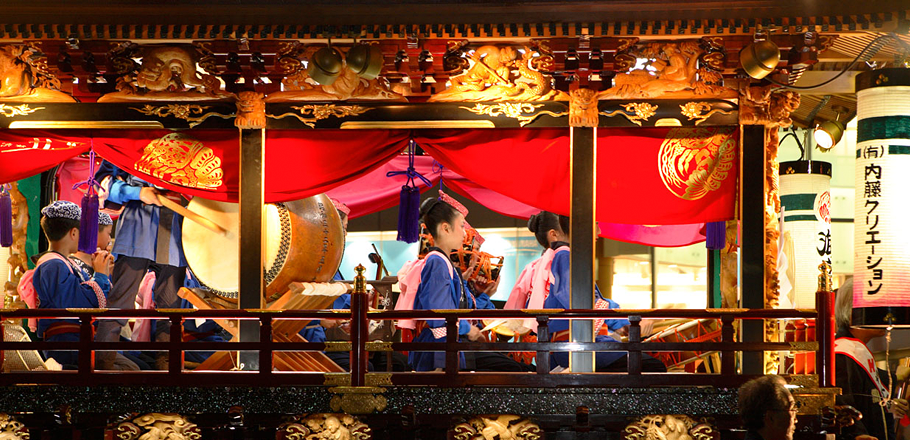
A long-established tradition
The history of Hamamatsu Festival dates back over 440 years to the Eiroku period (1558-1569).
According to the “History of Hamamatsu Castle” written by Shinyu Sakai, the festival started on the occasion of the birth of Yoshihiro, who was the first son to Iio Buzen no Kami, then Lord of Hikuma Castle and Governor of Hamamatsu.
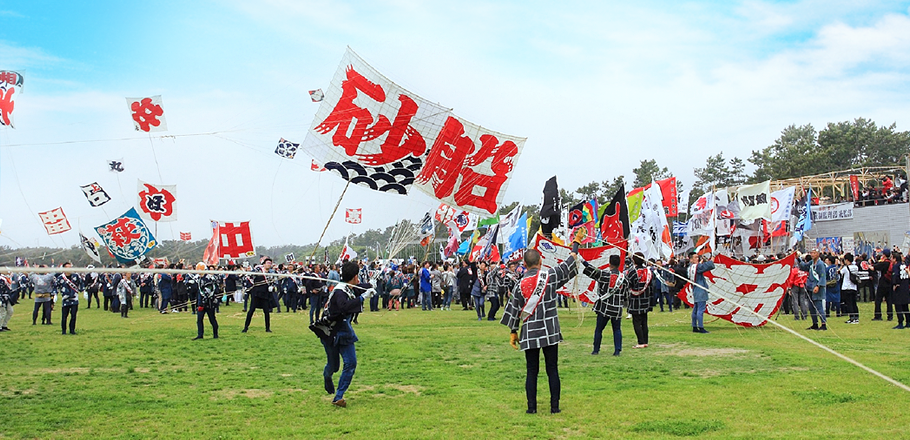
Kite battle
On May 3 at 11 a.m., along with the fireworks that accompany the opening ceremony, the sky is filled with kites from 170 different towns as they are launched all at once.
At the sound of trumpets to inspire a fierce battle, hundreds of competitors then jostle together and the kite battle begins.
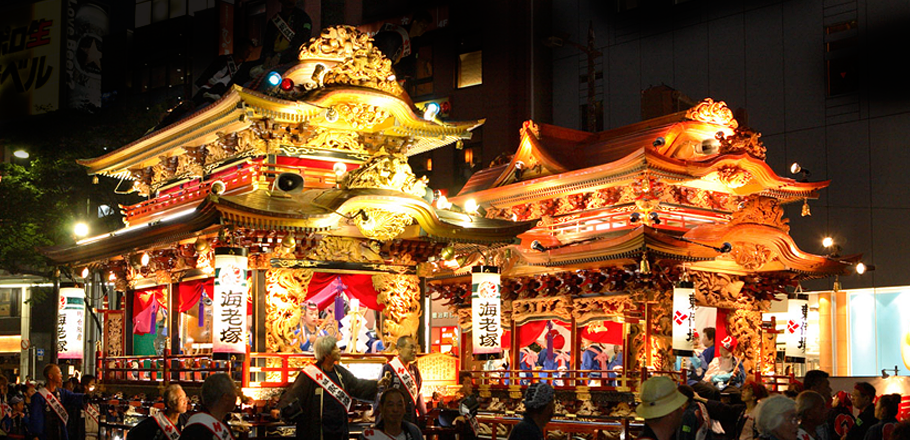
Parade of “Goten-Yatai”(palace-like floats)
As the sun sets amid the lingering excitement of the kite battle, the focus of Hamamatsu Festival moves to the city center.
To the accompaniment of veteran shamisen players, beautifully dressed children playing Japanese flutes, and the ohayashi (traditional orchestras), the spectacular floats begin their slow procession.
Facilities Guide
The Hamamatsu Festival Pavilion consists of five zones. Experience the fervor and excitement of Hamamatsu Festival through an exhibition featuring video footage and genuine kites. You can also buy original Hamamatsu Festival goods and locally produced souvenirs.
Facilities Map
Time required for a visit: 30-40 min
Exhibits
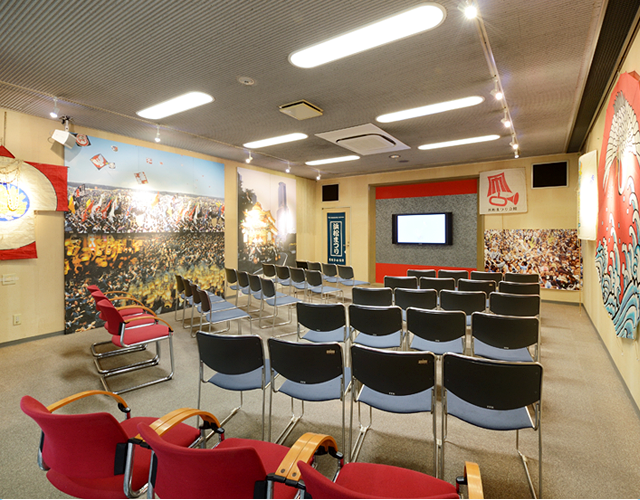
1
HD Room
Watch an 8-minute compilation video depicting Hamamatsu Festival in vivid, high-definition images.
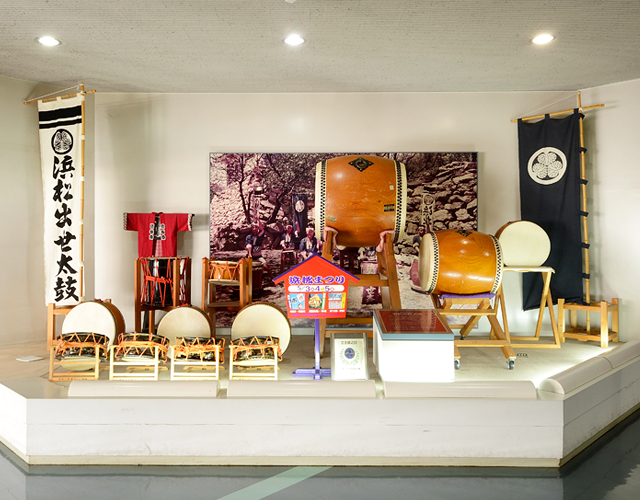
2
Hamamatsu Shusse-Daiko(drums of success)
At the Battle of Mikatagahara, the Takeda forces were so taken aback by the sound of drumming from the Tokugawa forces that they retreated, allowing the defeated Ieyasu Tokugawa to escape. See the drums used in Hamamatsu Shusse-Daiko, a drumming performance based on this historical event.
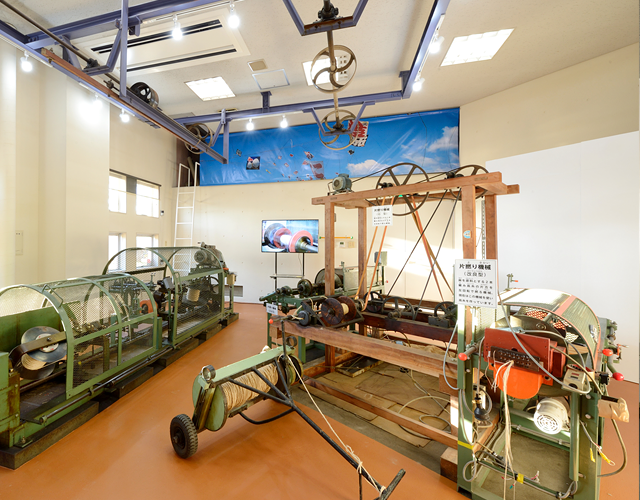
3
Kite String Workshop
Kite string holds the key to winning the kite battle, and has to be strong.
Made of hemp, which is friction-resistant, kite string is sold only at the Pavilion, meaning that every kite string is equally durable and no competitor gains an unfair advantage.
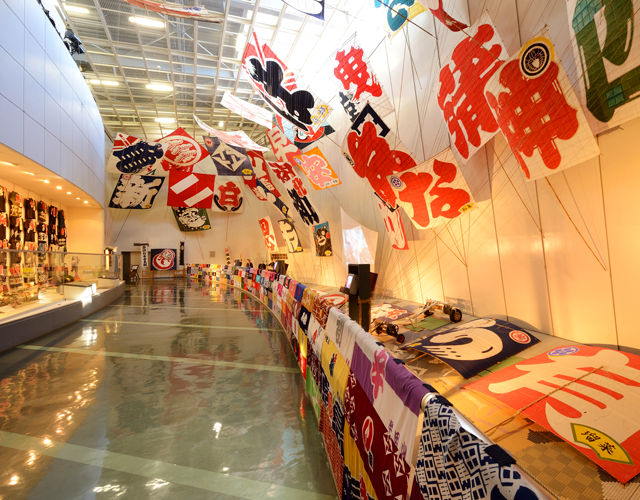
4
Large KiteExhibition Room
An audio-visual recreation of the kite battle.
The sound of trumpets and chanting will momentarily transport you to the kite battlefield.

5
Goten YataiExhibition Room
The parade of splendid floats and the night festival are recreated in sound and vision.
Built using traditional artisanal techniques, a float to commemorate the 80th anniversary of Hamamatsu City is also on display, and features precise, elaborate carvings.
Information
- Opening hours
- 9.00 a.m. - 4.30 p.m.
- Closed days
- December 29th – January 3rd
- Entrance fees
-
- Adult
- 400 yen
- Customers with I.D. who are registered as disabled or in rehabilitation, plus one caregiver
- Free of charge
- Middle school students or younger
- Free of charge
- ■ Group discounts
- Groups of 30 people or more 10% off
- Groups of 100 people or more 20% off
- Facilities Information
-
- Kiosk
- Vending machines
- Car parking
-
14 spaces for coaches, 191 spaces for cars
*Parking is not available during the Hamamatsu Festival (May 3-5). Please use the shuttle bus.
Information on volunteer guides
For group visitors, Hamamatsu Volunteer Sightseeing Guide Group or Pavilion staff is available to give a detailed explanation of Hamamatsu Festival and show you around the Pavilion. (Booking required)
Group reservations Application form
Download the group reservations application form here.
Hamamatsu Festival PavilionGroup reservations application form
(Written in Japanese)By Entetsu bus
●From JR Hamamatsu Station(approx. 15 min.)
Take the Nakatajima Line to Nakatajima Sakyu from stop No. 6 in the Bus Terminal.
See the timetablefor the Entetsu bus route here (Written in Japanese)
By taxi
●From JR Hamamatsu Station(approx. 10 min.)
Take a taxi from the taxi ranks at the north or south exits of Hamamatsu Station.
By car
●From Hamamatsu Interchange on the Tomei Expressway(approx. 15 min.)
●From Kanzanji (approx. 40 min.)
Please use the car park at Enshunada Coastal Park.
14 spaces for coaches, 191 spaces for cars.
*Parking is not available during the Hamamatsu Festival (May 3-5). Please use the shuttle bus.
Frequently Asked Questions
- What is Hamamatsu Festival?
-
Hamamatsu Festival is a three-day festival held on May 3, 4 and 5. You can enjoy the kite battle during the day and the parade of Goten Yatai (palace-like floats) at night.
At the kite battle, you can witness over a hundred large kites soaring into the sky all at once, and savor the intense string-cutting battle that ensues.
For the night parade, spectacular floats from each town are illuminated, and you can enjoy the music of “ohayashi” (traditional orchestras) from each float.
- How can I participate in Hamamatsu Festival?
-
To participate in Hamamatsu Festival, you must be affiliated to a participating town and at the very least be in possession of its happi, paper lantern, and emblem.
Please contact the residents’ association for a particular town or the Kite Association for details.
- Are there freely accessible areas?
-
The kiosk and restrooms can be accessed free of charge.
If you are looking for souvenirs of Hamamatsu, such as kites and small paper lanterns, please visit the Pavilion.
- Do you have information in foreign languages?
-
Videos screened at the Pavilion have English subtitles.
Please also feel free to ask for English-language pamphlets.
ページのトップへ戻る
